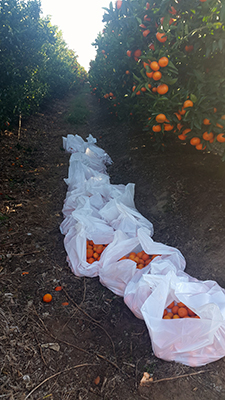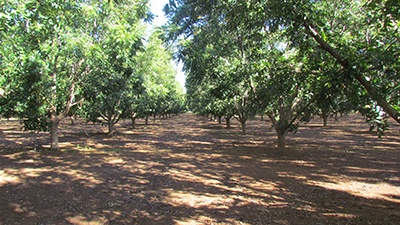Latest News Archive
Please select Category, Year, and then Month to display items
22 September 2021
|
Story Michelle Nöthling
|
Photo Supplied
 Annemarie Le Roux.
Annemarie Le Roux.
“I love working with children.” This is one of the first things Annemarie le Roux mentions when asked to describe herself. This love for children propelled Annemarie into the field of education and she graduated in 2006 with a BEd in Foundation Phase at the UFS. Annemarie immediately immersed herself in the Deaf community, enriching the lives of children at the Thiboloha School for the Deaf in Qwaqwa and the De la Bat School for the Deaf in Worcester.
The academic world enticed Annemarie back to the University of the Free State (UFS) and she was appointed as a junior lecturer in the Department of South African Sign Language (SASL) and Deaf Studies in 2013. Going from strength to strength, Annemarie completed her master’s degree in SASL in 2019, and published an
article earlier this year that she co-wrote with Marga Stander. In this article, they found that SASL “has become an increasingly popular language that hearing university students want to learn as a second language” and subsequently explored different teaching methods used for this emerging group of interested students.
Although now firmly established in academia, Annemarie is still committed to the practical application of SASL. “I am closely involved in student and community engagement through the
SIGNALS Sign Language student association that helps empower the Deaf community and South African Sign Language.” She also interprets for the Deaf community whenever she gets an opportunity, as well as for Deaf students in class and meetings.
On the importance of Sign Language and the recognition of the Deaf community in South Africa, Annemarie believes it will open greater opportunities for development. “More people will be able to learn SASL, and it might even become a subject in school for hearing children.”
Plant eco-physiologist finds effective solutions for crop optimisation
2016-07-24

The bio-stimulant was tested on
this citrus. This is the first time
that the product has been tested
on a crop.
In a time characterised by society facing increasing population growth, food crises, and extreme climatic conditions such as drought, it is essential for farmers to integrate science with their work practices in order to optimise crops.
Role of photosynthesis and plant sap data
By knowing how to use photosynthesis and plant sap data for determining plant health, fast and effective solutions could be established for the optimisation of crops. This technique, which could help farmers utilise every bit of usable land effectively, is the focus of Marguerite Westcott’s PhD study. She is a junior lecturer and plant eco-physiologist in die Department of Plant Sciences at the University of the Free State.
Westcott uses this technique in her studies to prove that a newly-developed bio-stimulant stimulates plants in order to metabolise water and other nutrients better, yielding increased crops as a result.
Agricultural and mining sectors benefit from research
The greatest part of these projects focuses on the agricultural sector. Westcott and a colleague, Dr Gert Marais, are researching the physiology of pecan and citrus trees in order to optimise the growth of these crops, thus minimising disease through biological methods. Field trials are being conducted in actively-producing orchards in the Hartswater and Patensie areas in conjunction with the South African Pecan Nut Producers Association (SAPPA) amongst others.
The principles that Westcott applies in her research are also used in combination with the bio-stimulant in other studies on disturbed soil, such as mine-dump material, for establishing plants in areas where they would not grow normally. This is an economical way for both the agricultural and mining sectors to improve nutrient absorption, stimulate growth, and contribute to the sustainable utilisation of the soil.

The bio-stimulant contributes to the immunity of the plants.
It was tested in these pecan nut orchards (Hartswater).
Soil rehabilitation key aspect in research projects
“One of two things is happening in my research projects. Either the soil is rehabilitated to bring about the optimal growth of a plant, or the plants are used to rehabilitate the soil,” says Westcott.
Data surveys for her PhD studies began in 2015. “This will be a long-term project in which seasonal data will be collected continuously. The first set of complete field data, together with pot trial data, will be completed after the current crop harvest,” says Westcott.